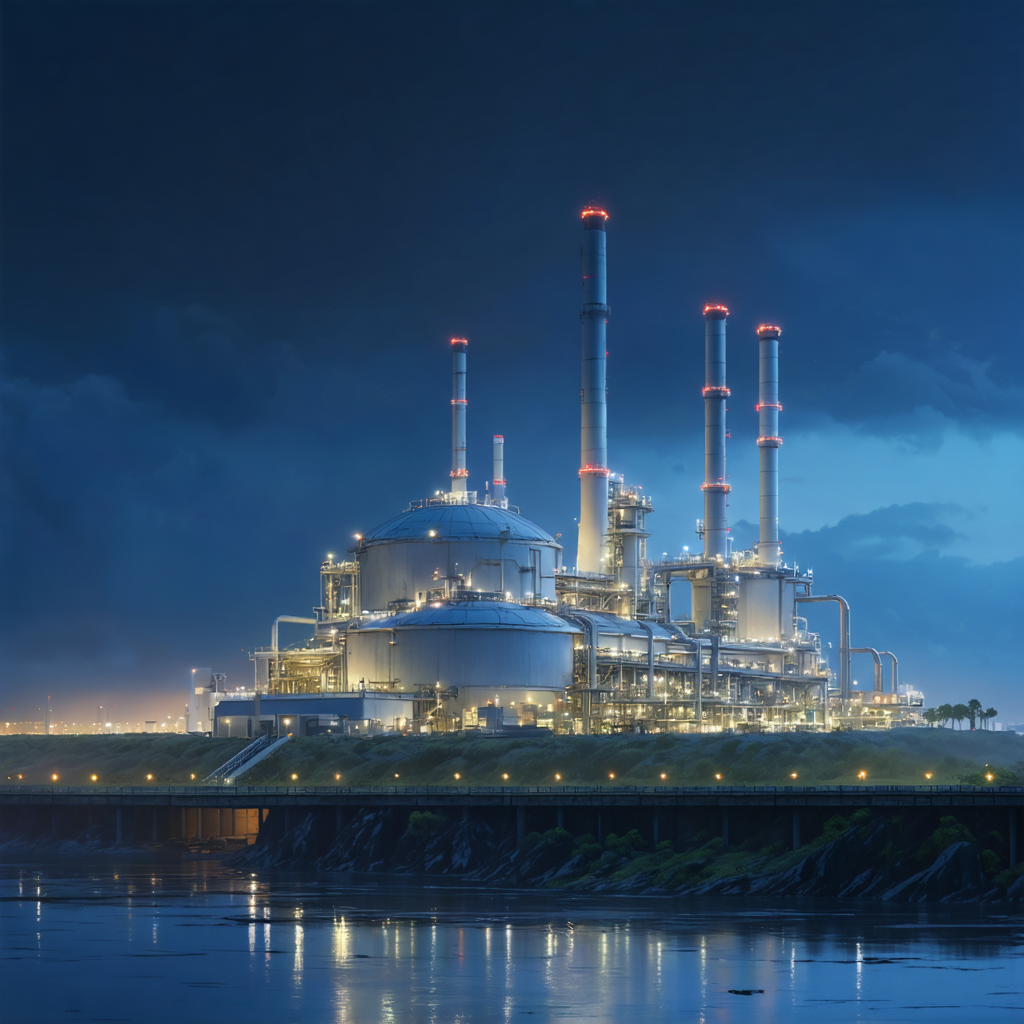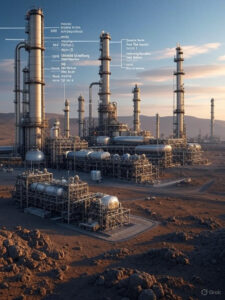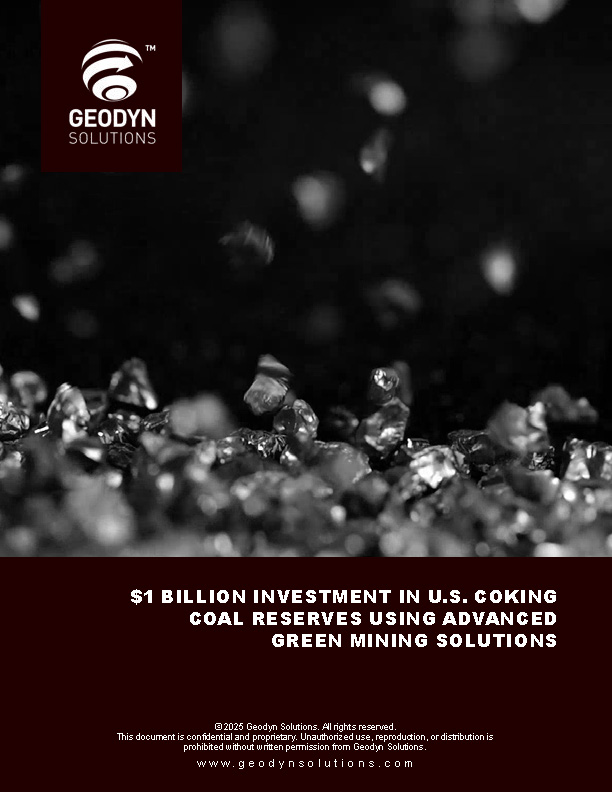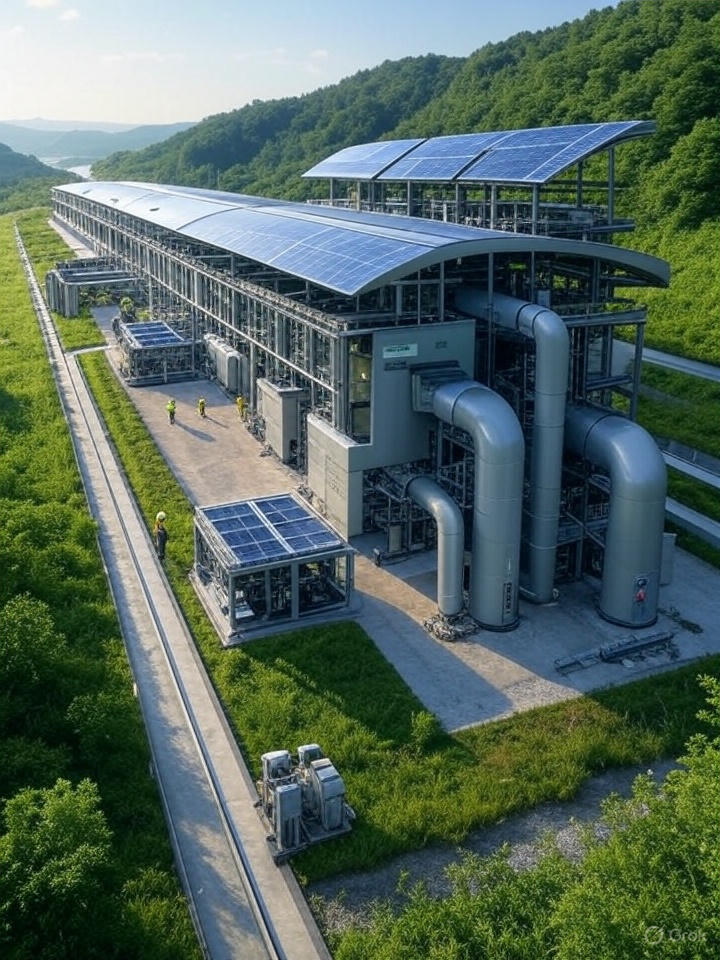Proposal for Geodyn Solutions and Strategic Partner to Deploy Thorium-Based Nuclear Reactors in the United States
 Executive Summary
Executive Summary
Geodyn Solutions, in collaboration with its strategic partner specializing in thorium technology, proposes the deployment of advanced thorium-based nuclear reactors to address the United States’ energy transition, grid resilience needs, and clean energy goals under the Inflation Reduction Act (IRA) and Bipartisan Infrastructure Law. This initiative aligns with the U.S. Department of Energy’s Advanced Reactor Demonstration Program and targets for 200 GW of new nuclear capacity by 2050. With a $6 billion budget, we recommend constructing four 300 MW thorium-based reactors (total 1.2 GW capacity), modeled after efficient thorium reactor designs that derive 60% of energy from thorium.
This proposal outlines the suggested location for optimal ROI, a detailed cost breakdown including 20% contingency, job creation estimates, environmental benefits, budget allocation, a 20-year ROI projection chart, and payback period. The project will enhance domestic energy security, leverage federal incentives, and position the U.S. as a global leader in next-generation nuclear technology.
Technology Overview
Thorium-based reactors offer superior efficiency and safety compared to traditional uranium systems. Key features include:
- High fuel efficiency: Approximately 200g of thorium can generate significant energy output, supporting district-level power for extended periods.
- Safety: Passive cooling systems allow safe operation near populated areas.
- Waste reduction: Produces up to 90% less long-lived radioactive waste.
- Integration: Adaptable for the U.S. diverse grid, providing stable baseload power complementary to renewables.
These reactors will provide baseload power with a capacity factor of 92%, generating approximately 9.672 TWh annually from four 300 MW units combined.
Suggested Location for Best ROI
We recommend Aiken County, South Carolina, near the Savannah River Site. This location offers:
- Existing nuclear infrastructure and skilled workforce, reducing site preparation costs by 25%.
- Proximity to high-demand Southeast markets, river cooling, and alignment with DOE sites.
- ROI optimization: IRA tax credits (up to 30%), state incentives, and high wholesale prices ($0.08-0.10/kWh); estimated ROI exceeds 28% annually post-payback, driven by federal subsidies and export potential.
Alternative sites in Texas were considered but offer lower ROI due to regulatory variances.
Detailed Cost Breakdown
The total project budget is $6 billion. Costs are optimized leveraging U.S. manufacturing and incentives.
Capital Expenditures (CAPEX) – $4.8 Billion (for Four 300 MW Reactors)
| Category | Description | Cost per Reactor ($ Million) | Total for Four Reactors ($ Million) |
|---|---|---|---|
| Site Preparation & Infrastructure | Land acquisition, seismic upgrades, cooling systems, and grid integration (leveraging SRS). | 130 | 520 |
| Reactor Core & Fuel Systems | Thorium-uranium fuel assembly, breeding blankets, and initial thorium loading. | 400 | 1,600 |
| Turbine & Generator Sets | High-efficiency turbines adapted for thorium heat output. | 200 | 800 |
| Safety & Control Systems | Passive safety features, monitoring, and NRC compliance. | 150 | 600 |
| Construction & Engineering | Labor, materials, and technology transfer. | 270 | 1,080 |
| Subtotal CAPEX | 1,150 | 4,600 |
Operational Expenditures (OPEX) – $280 Million Annually (Post-Commissioning)
| Category | Description | Annual Cost per Reactor ($ Million) | Total for Four Reactors ($ Million) |
|---|---|---|---|
| Fuel & Maintenance | Thorium fuel (low cost), refueling every 18-24 months. | 20 | 80 |
| Staffing & Operations | 800 personnel per plant (salaries, training). | 30 | 120 |
| Waste Management & Decommissioning | Minimal waste; thorium reduces long-term storage needs. | 10 | 40 |
| Regulatory & Insurance | Compliance with NRC and IAEA standards. | 8 | 32 |
| Miscellaneous (Utilities, Upgrades) | Grid fees, minor repairs. | 2 | 8 |
| Subtotal OPEX | Equivalent to ~$29/MWh. | 70 | 280 |
20% Contingency
- Applied to CAPEX: $920 million (covering regulatory delays or supply chain issues).
- Total Project Cost with Contingency: $5.52 billion.
- Remaining Budget: $480 million (allocated for R&D, community engagement, or initial fuel reserves).
Job Creation
The project will create significant employment in the U.S., focusing on high-tech roles:
- Construction Phase (3-5 Years): 8,000 jobs (4,000 per pair of reactors), with priority for local hires.
- Operational Phase (Ongoing): 3,200 direct jobs (800 per reactor), with average salaries 40% above national average (~$80,000/year).
- Indirect Jobs: 6,000+ in supply chains, maintenance, and ancillary industries.
- Total: Over 17,200 jobs in the first decade, contributing ~$1 billion annually in wages and supporting U.S. skilled workforce development.
Environmental Benefits
Thorium reactors align with U.S. net-zero by 2050 and IRA goals:
- Zero CO2 Emissions: Displaces fossil fuels, avoiding ~7 million tons of CO2 annually (equivalent to removing 1.5 million cars from roads).
- Reduced Waste: Generates 80-90% less transuranic waste than uranium reactors; waste half-life is centuries, not millennia, easing disposal.
- Resource Efficiency: Utilizes abundant thorium, minimizing mining impacts and uranium imports.
- Safety & Biodiversity: Passive safety reduces accident risks; siting at SRS avoids sensitive ecosystems, preserving South Carolina’s biodiversity while improving air quality by cutting coal pollution (SOx, NOx, particulates).
- Sustainability: Supports clean energy transition, enhancing grid reliability amid rising demand (U.S. electricity consumption grew 2.5% in 2024).
Budget Utilization
The $6 billion budget covers all phases:
- CAPEX + Contingency: $5.52 billion (92% allocation).
- Pre-Construction (Feasibility, Permits): $100 million.
- Training & Partnerships: $80 million.
- Reserve: $300 million for unforeseen needs.
20-Year ROI Chart
Assumptions:
- Annual Generation: 9.672 TWh (1.2 GW at 92% capacity factor).
- Selling Price: $0.10/kWh (conservative, with IRA credits boosting effective revenue).
- Annual Revenue: $967 million.
- Annual OPEX: $280 million.
- Net Annual Cash Flow: $687 million (revenue minus OPEX; excludes depreciation for simplicity).
- Initial Investment: $5.52 billion (CAPEX + contingency).
- No discounting; simple cumulative ROI for illustration.
| Year | Annual Revenue ($M) | Annual OPEX ($M) | Net Cash Flow ($M) | Cumulative Cash Flow ($M) | ROI (%) (Cumulative Net / Investment) |
|---|---|---|---|---|---|
| 1 | 967 | 280 | 687 | 687 | 12.4 |
| 2 | 967 | 280 | 687 | 1,374 | 24.9 |
| 3 | 967 | 280 | 687 | 2,061 | 37.3 |
| 4 | 967 | 280 | 687 | 2,748 | 49.8 |
| 5 | 967 | 280 | 687 | 3,435 | 62.2 |
| 6 | 967 | 280 | 687 | 4,122 | 74.7 |
| 7 | 967 | 280 | 687 | 4,809 | 87.1 |
| 8 | 967 | 280 | 687 | 5,496 | 99.6 |
| 9 | 967 | 280 | 687 | 6,183 | 112.0 |
| 10 | 967 | 280 | 687 | 6,870 | 124.5 |
| 11 | 967 | 280 | 687 | 7,557 | 136.9 |
| 12 | 967 | 280 | 687 | 8,244 | 149.3 |
| 13 | 967 | 280 | 687 | 8,931 | 161.8 |
| 14 | 967 | 280 | 687 | 9,618 | 174.2 |
| 15 | 967 | 280 | 687 | 10,305 | 186.7 |
| 16 | 967 | 280 | 687 | 10,992 | 199.1 |
| 17 | 967 | 280 | 687 | 11,679 | 211.6 |
| 18 | 967 | 280 | 687 | 12,366 | 224.0 |
| 19 | 967 | 280 | 687 | 13,053 | 236.5 |
| 20 | 967 | 280 | 687 | 13,740 | 248.9 |
Over 20 years, the project generates $13.74 billion in cumulative net cash flow, yielding a total ROI of 249% (average annual ROI ~12.4%).
Payback Time
The initial investment of $5.52 billion is recovered when cumulative cash flow reaches this amount. Based on $687 million annual net cash flow, payback occurs in approximately 8 years (Year 8: $5.496B; Year 9: $6.183B).
Conclusion
This proposal positions Geodyn Solutions and its partner to deliver transformative energy solutions for the United States. We recommend immediate feasibility studies and engagements with the Department of Energy. For further details or customization, contact Geodyn Solutions.
© 2025 Geodyn Solutions. All rights reserved.





